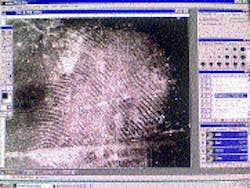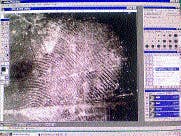Vision and imaging cover diverse uses
Machine-vision and image-processing systems have performed successfully as inspection and data-manipulation tools. They can now identify colored fuses prior to automobile installation, confirm criminal forensics information, process VMEbus gigabyte data, and hyperspectrally map the Earth.
The automotive industry was an early adopter of gray-scale machine-vision systems as cost-effective inspection tools to eliminate rework, improve quality, and prevent user liability. Now, recently developed color-based machine-vision systems have greatly expanded auto-product verification and identification. In one color application, says Mike Muehlemann, president of Illumination Technologies Inc., auto fuse-block assemblies are being checked for proper value and placement prior to chassis wiring (see p. 19).
Digital image-processing systems are providing vital evidence in investigative forensics. They process fingerprints, mug shots, background information, and crime scenes. According to contributing editor Larry Curran, a county sheriff's office has integrated dual PCs, cameras, scanners, and printers to meet diverse law-enforcement vision and imaging needs (see p. 27).
To increase the speed of signal- and image-processing algorithms, NASA is studying reconfigurable computing systems as low-cost methods to improve performance over general-purpose CPUs and DSPs. According to editor at large Andrew Wilson, academic researchers are developing compiler technology that can automatically map signal- and image-processing algorithms to configurable computing environments (see p. 33).
Despite the emergence of new bus technologies, the 20-year-old VMEbus technology continues to remain competitive. In fact, the latest VME boards can provide image-acquisition, storage, processing, and display functions on a single, one-slot VME card. Andy Wilson discusses how boards from several vendors have boosted the original 40-Mbyte/s VME data transfer protocol to rates greater than 1 Gbyte/s (see p. 39).
George Kotelly Executive Editor[email protected]
